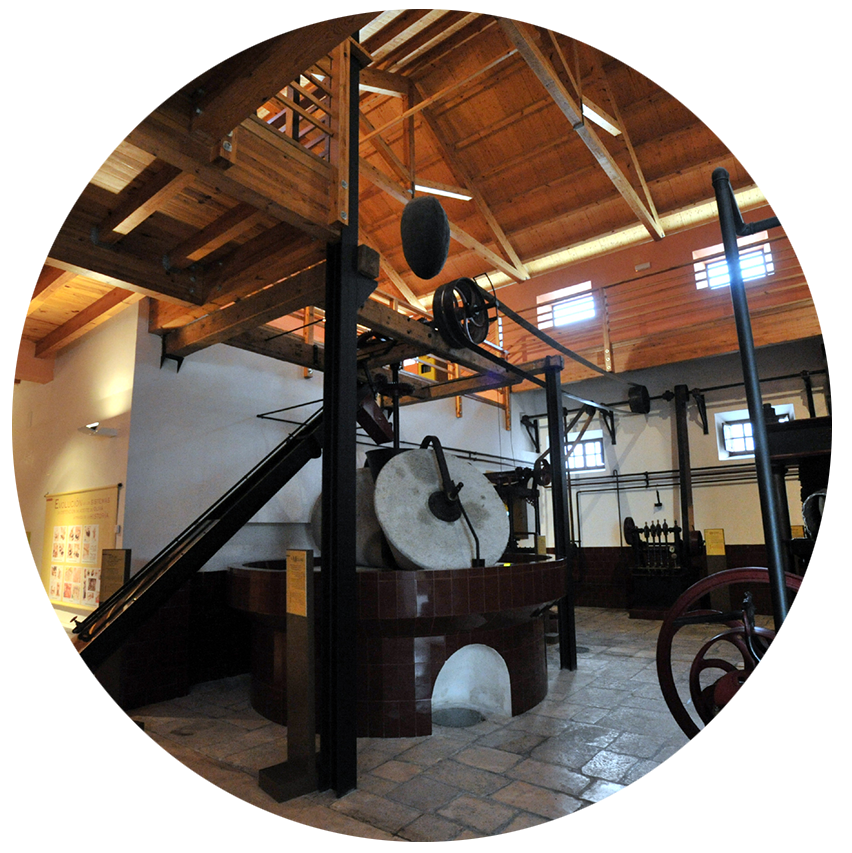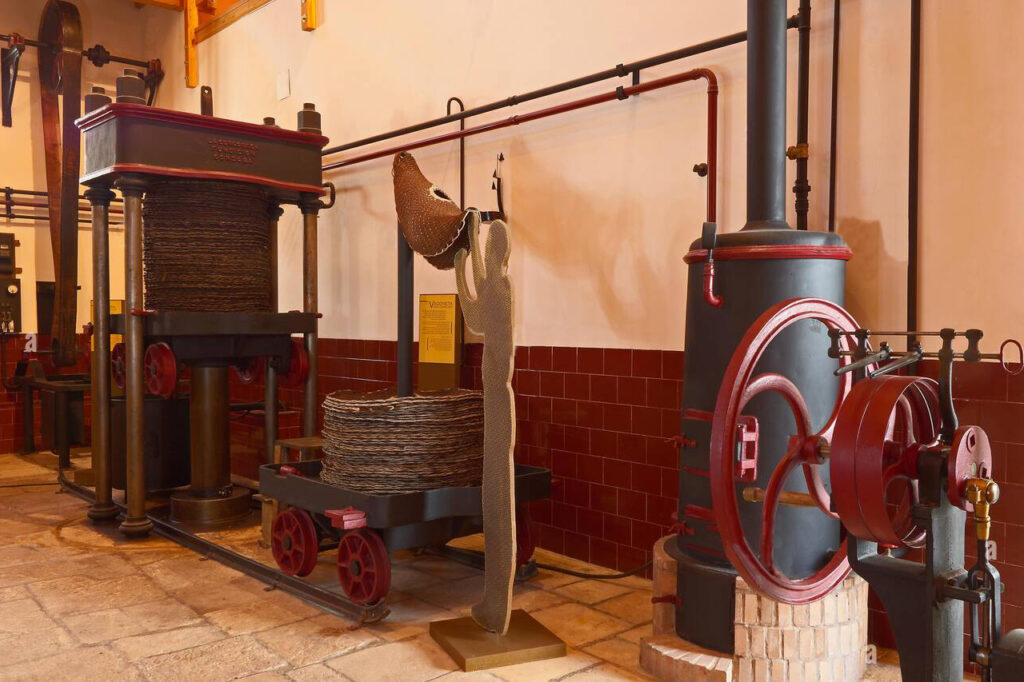
Museum of the olive grove and oil. the mill the mill
Until 1959, the building where the Baena Olive Grove and Oil Museum is located was an old mill whose machinery, mostly from the mid-19th century, is what is now on display in its different rooms.
With a large exhibition area distributed over two floors, the first one is dedicated to the mill, itself, the empiedro , the thermomixer , the piston pump and the hydraulic press stand out . The first of them, also called solera, consisted of a circular granite surface on which the rollers or mills that crushed the olives turned. The paste obtained was introduced into the second of the indicated elements where it was beaten with the help of the blades that made up the piece and, finally, the piston pump activated the press where the oil was extracted. Previously, the paste had been deposited in the basketsor capacetas, that an operator or cagarrache had transported in a bucket forming the charge. The oil obtained was then collected in the settling wells or wells that can be seen in the next room, in which the olive oil will be decanted, leaving it free of olive oil and impurities. The pump for transferring the oils and driving the hot water used in the thermomixer was driven by one of the multiple pulleys transmittedby a flat belt, which, attached to the central axis, received its movement and impulse from the mother pulley, driven by in turn for the engine that still continues to perform its original function today.
Next to the wells is the room in which the old wineryhas been recreated , with its large iron tanks, and the projection and multiple use room preceded by two spaces where oil extraction throughout history is explained. and a model of what was once the Duke’s mill, the oldest that existed in the town, is on display

Hopper and stone mill.

Hydraulic press for baskets.
The wide uses of the oil
The second floor of the Museum has exhibition and oil workshop areas but, above all, it is dedicated to showing the wide range of uses that have been given to olive oil from ancient times to the present. In this way, in addition to food, where Baena occupies a prominent place, cosmetics or pharmacology are other sectors where the use of extra virgin oil as the basis of its production is making its way.
Finally, a wide collection of historical labels tells us about the production of a virgin oil in which quality has always prevailed, guaranteed today by the Baena Denomination of Origin . The modern mills, heirs to the history shown in this Museum, work cold, rigorously separating the first extraction oils and thus preventing the heat from altering the vitamin and aromatic complexes of the final product: an extra virgin olive oil recognized as one of the best in the world.
Baena's "liquid gold"
Baena oil is fruity, the intensity of this characteristic depending on the degree of maturity of the olive. Varieties such as Picuda, which is the most abundant, and others such as Hojiblanca, Lechín Chorrúa or Picual, give the area’s oils special characteristics of great finesse and personality.